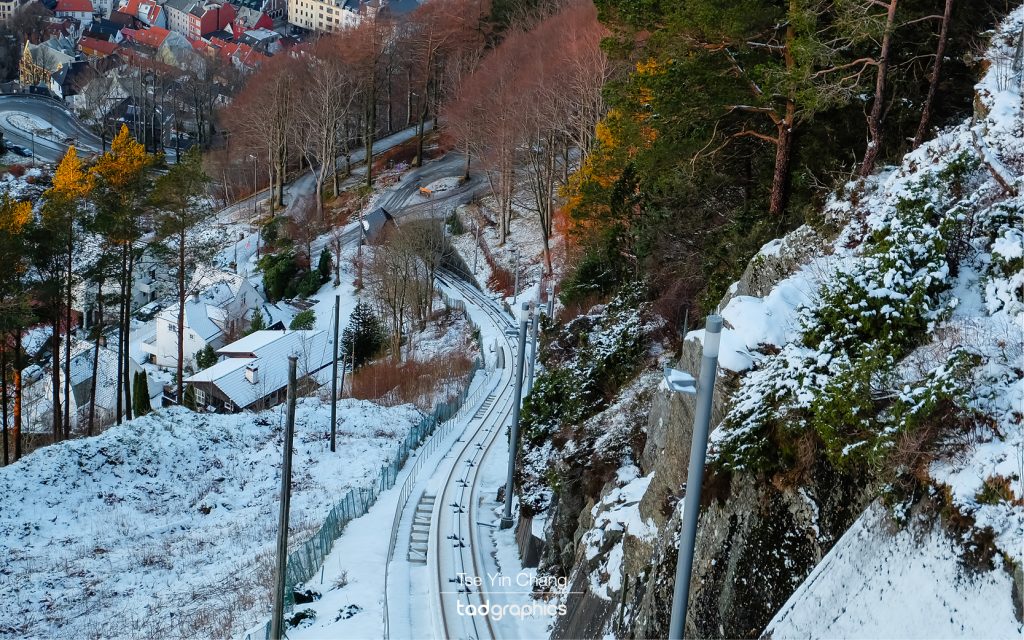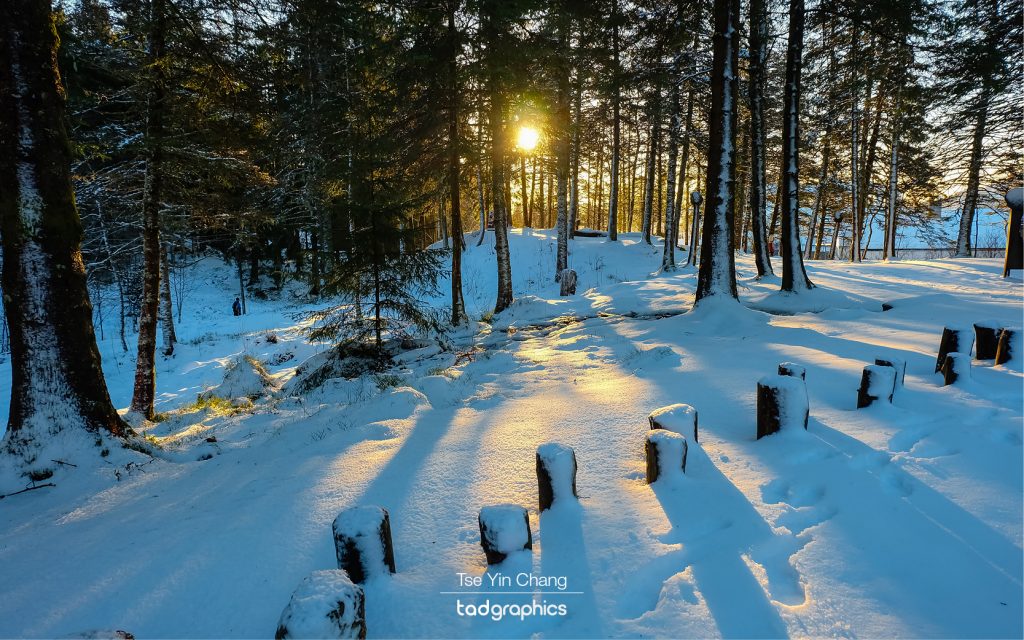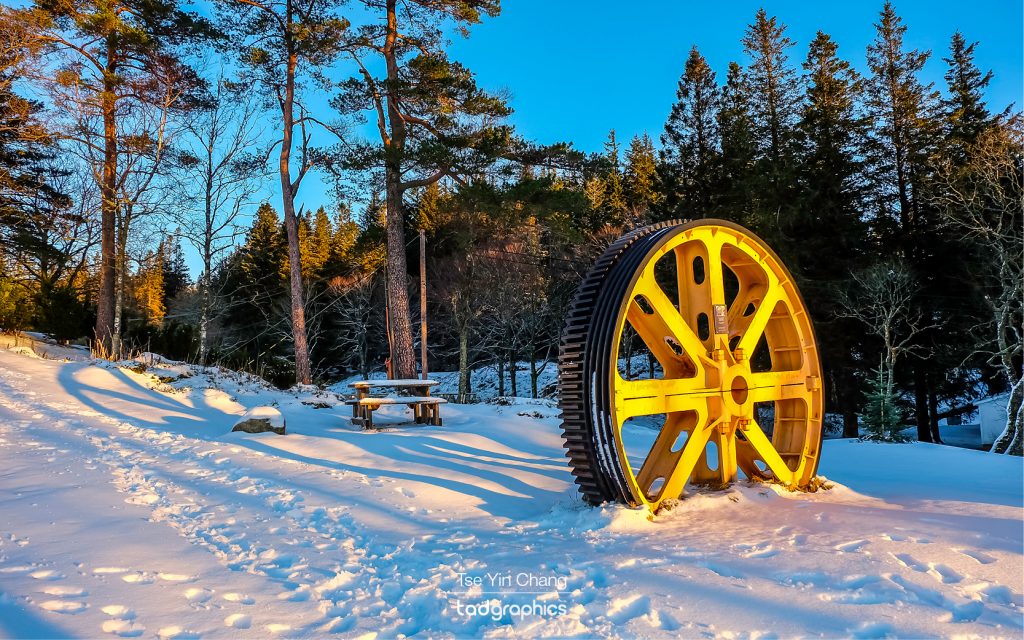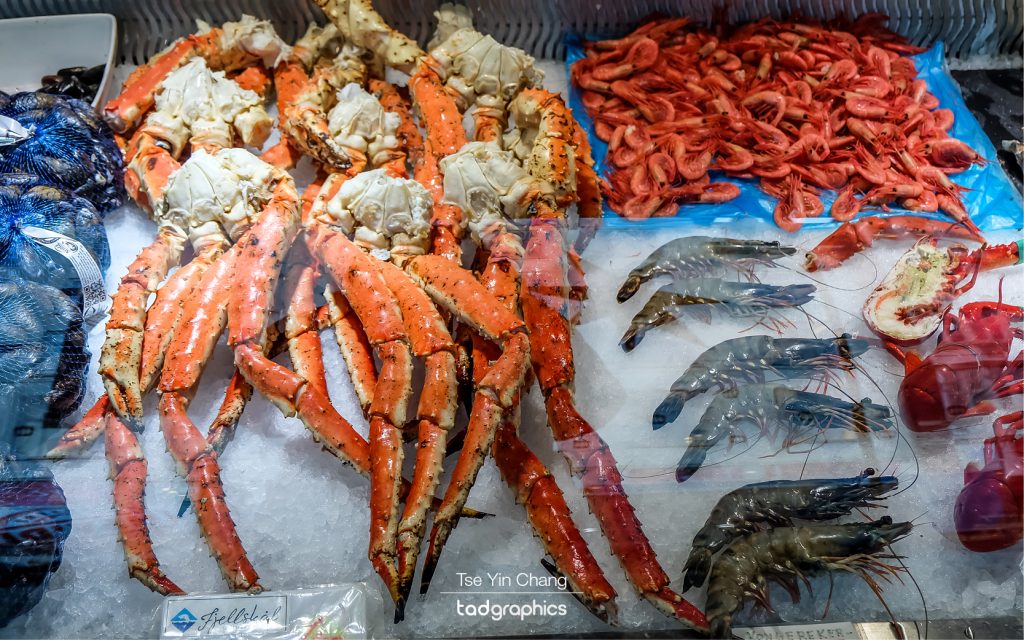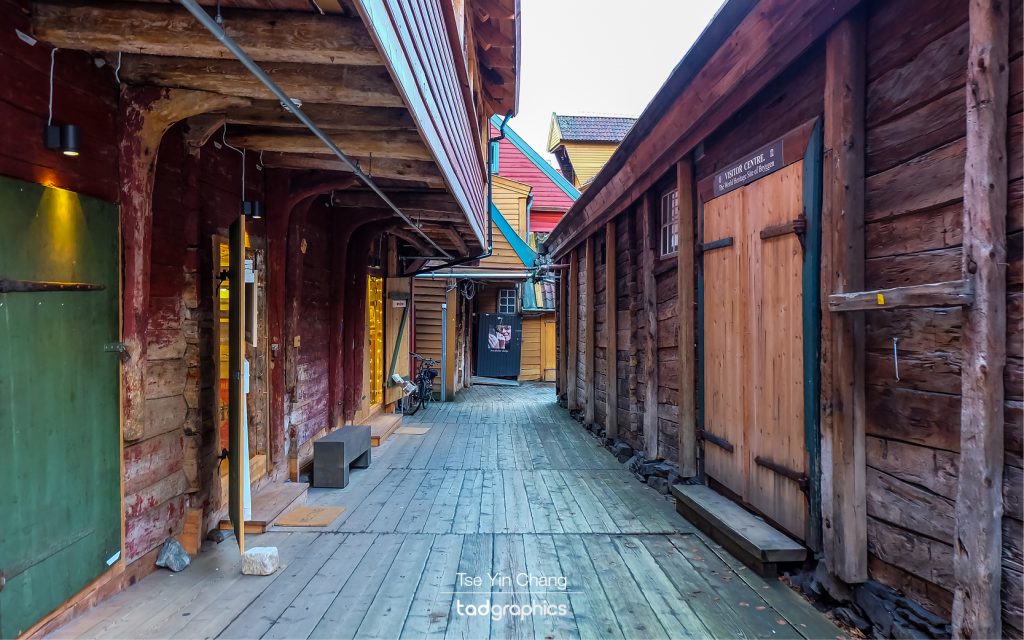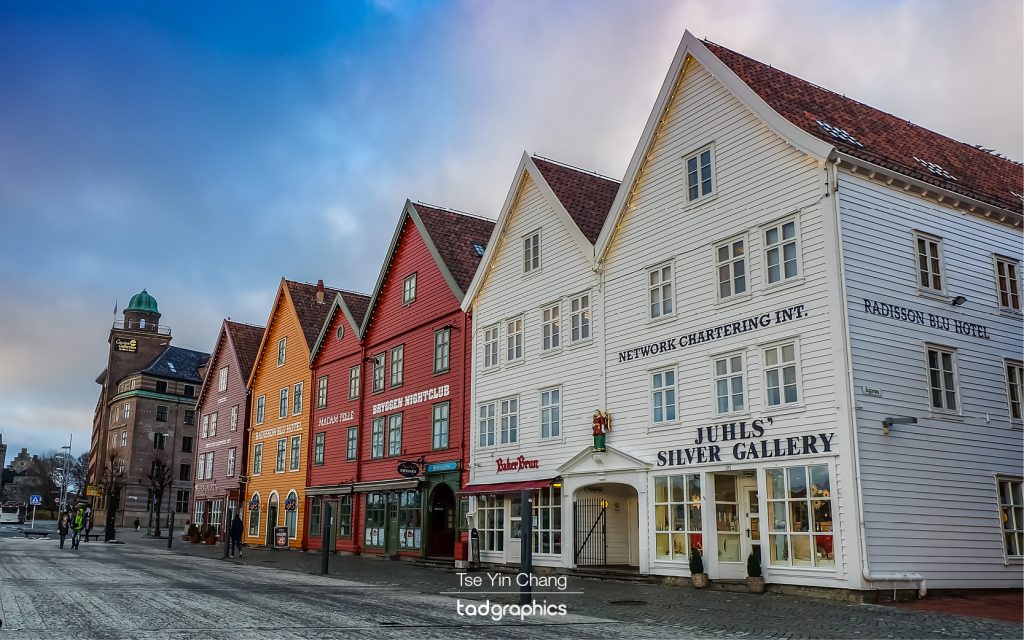
So far our time in Norway had shown us a little bit of everything the country has to offer. From the busy capital city to the wild fjords and majestic mountain regions, Norway was exceeding our expectations on every level.
After a journey by train and boat across the country’s stunning landscapes, we had just arrived back in civilisation. Bergen is Norway’s second largest city. But with less than 300,000 people living within the city limits, it had a nice small town charm, which we weren’t expecting.
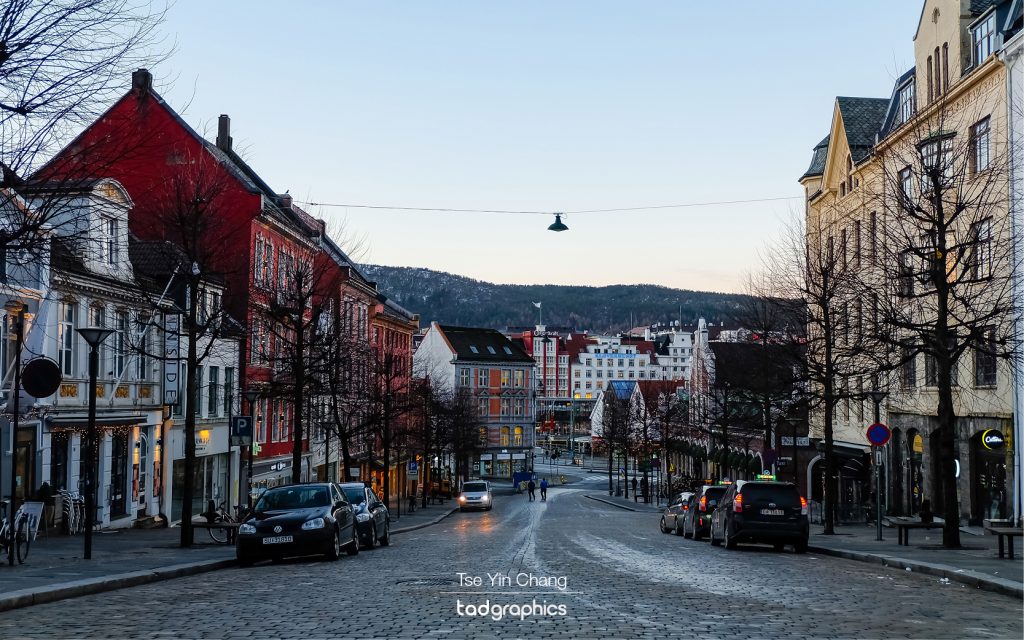
Nicknamed ‘the capital of the fjords’, Bergen sits hemmed in between the surrounding mountains and the Byforden. The Norwegian fjords don’t follow a straight path to the sea and instead weave their way around the peaks to create dramatic bodies of water and spindly arms of rugged land. This, combined with the many islands where much of the city’s suburbs are located, the result is a spectacular setting.
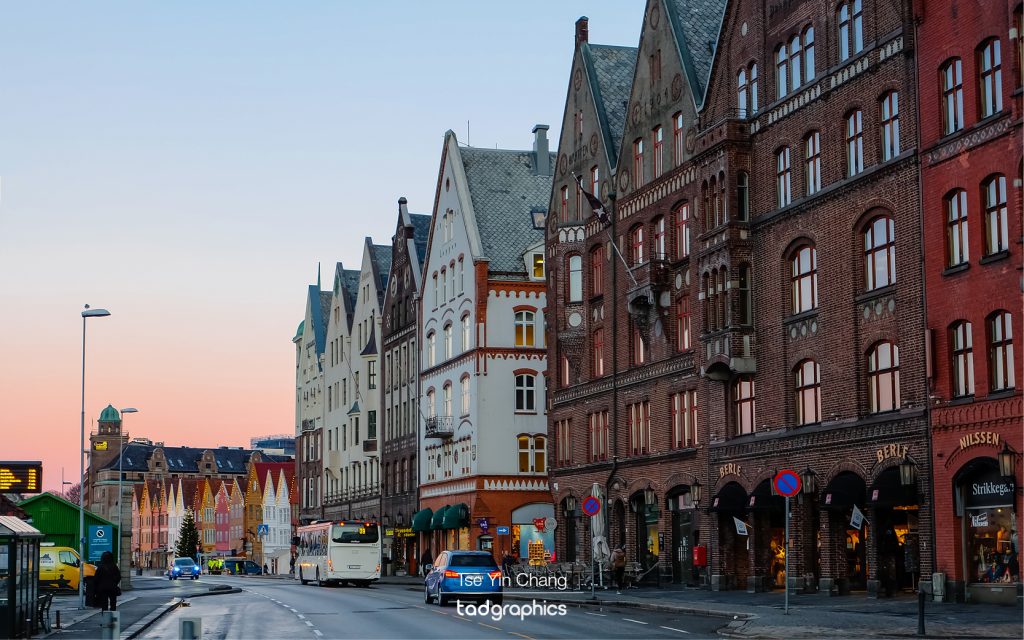
We had just two nights to explore the city, and after arriving from Flåm in the evening, we checked into Hotel No 13, which is located just a short walk along the edge of the Lille Lungegårdsvannet city lake from the train station. A modern hotel with trendy decoration, Hotel No 13 also played on the early 20th century art nouveau style of its building. This is most obvious in the beautiful colourful stained glass ceiling in the reception area. After admiring our surroundings, we settled in the for the night and enjoyed some rest ahead of our full day of exploring the city on foot the next morning.
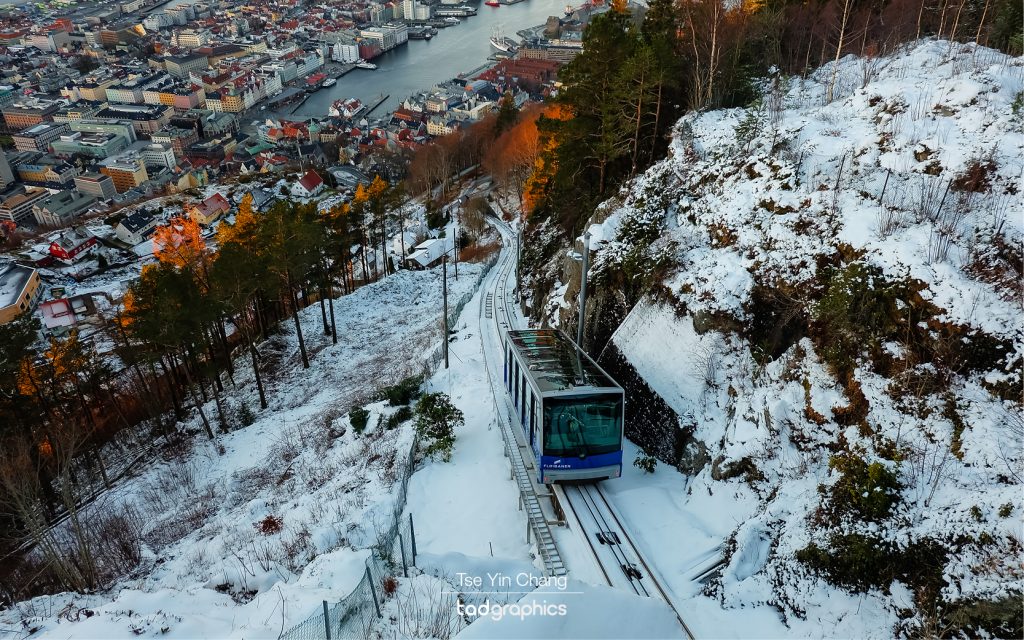
After a good night’s sleep, we were up bright and early for a full day of exploring – starting with a walk to the Fløyen Funicular station. As mentioned earlier, Bergen is defined not just by its fjords, but also its mountains, and another of its nicknames is ‘the city of seven mountains’. Fløyen is the peak closest to the city centre, and the funicular allows those short of time (or unwilling to walk the 400 metres to the top) a quick way of reaching the summit. Within ten minutes of boarding we were taking in the impressive views. From this vantage point Bergen’s unique geography is really obvious, and the combination of city, mountains and water was extremely photogenic. We spent the next few hours wandering around the many trails which run around the snow covered mountain before heading back down into Bergen.
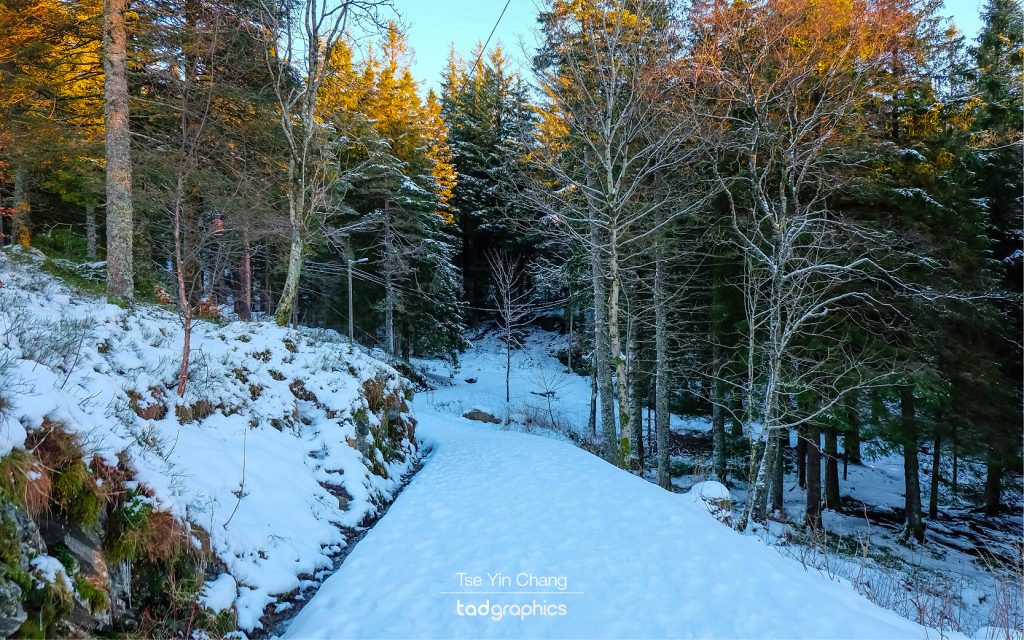
Being such a water oriented city, Bergen has a lively fish market. As it was lunch time, we decided to head there next. Outside and right on the waterfront, the stall holders sold everything from crabs and prawns to salmon and even whale! If you make a purchase they will even cook it for you. It made for a cheap, delicious and authentically Norwegian lunch.
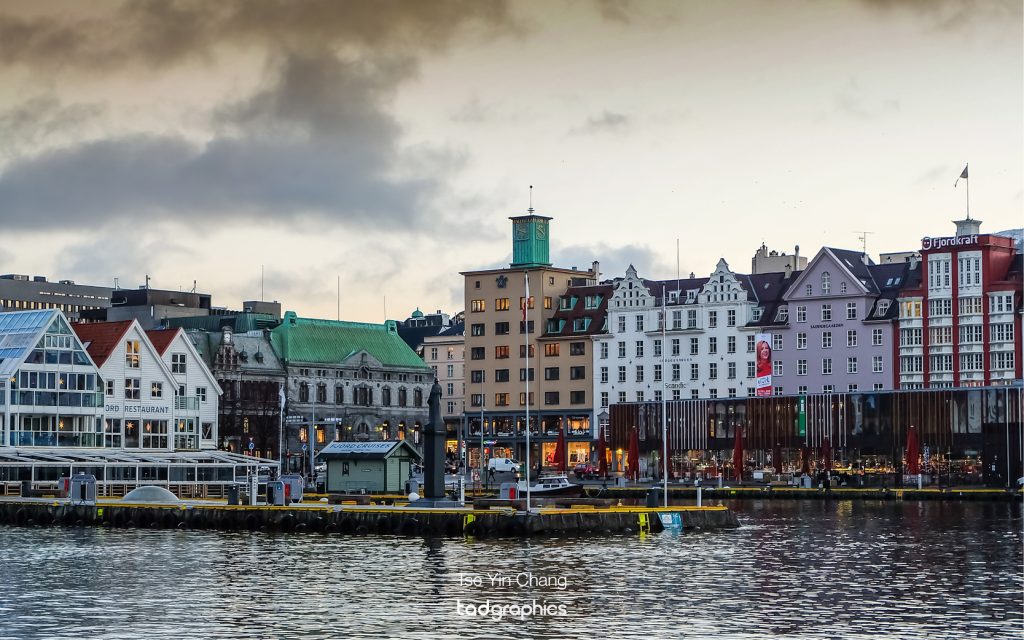
Whilst sat enjoying our lunch along the waterfront, we had an opportunity to admire the architecture in a part of the city known as Bryggen. One of the oldest parts of the city, Bryggen is on the UNESCO world heritage list. It was originally founded by German traders who would visit the city which is why its full name – Tyskebryggen – translates as The German Dock. Lining the water are a procession of colourful wooden buildings with steep triangular roofs. One of the most photographed tourist spots, these delightful buildings enjoy a historic quaintness that can only be found in Europe. It is this part of town that features on the majority of Bergen’s postcards. So needless to say we spent some time photographing them.
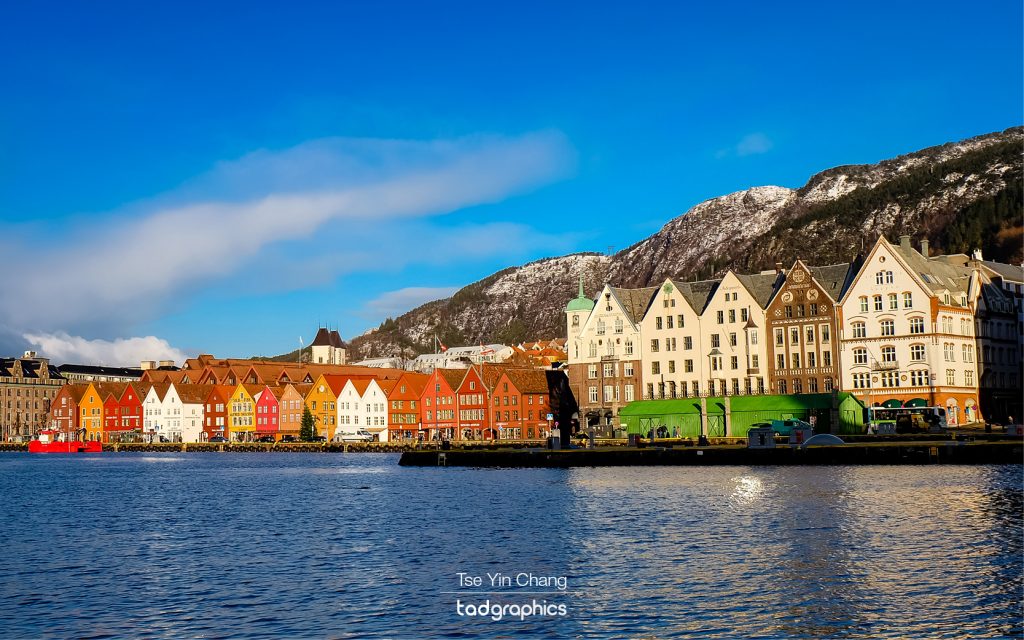
Conveniently our next destination was just on the other side of Bryggen. We meandered through its streets until we reached the Bergenhus Festning. This is the city’s fortress and it has guarded the harbour entrance since at least the 1240s. There are a few different buildings which make up the castle with some being built later – although still being centuries old. The oldest is Haakon’s Hall, where Viking kings would hold great feasts, get married and plan their invasions. After taking it all in, we wandered slowly back along the harbour and back to the centre of town. Along the way we caught an amazing sunset lighting up the fjord and made dramatic silhouettes of the mountains.
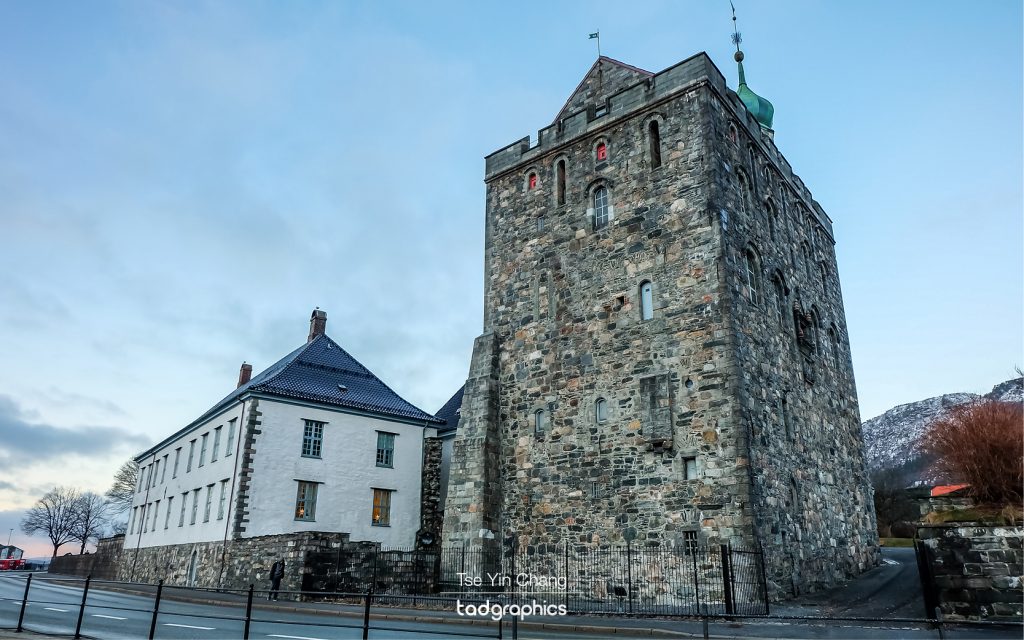
With our day in Bergen coming to an end, we still had one more thing we wanted to see. First however, we needed to eat. Keen to sample more local cuisine, we headed to a place well known for serving gourmet meals based on local culinary traditions. A hip, modern restaurant, Marg & Bein was as good as we had hoped. Located in the area around Fosswinckels gate, the atmosphere was elegant yet informal, and it was great to try more Norwegian food.
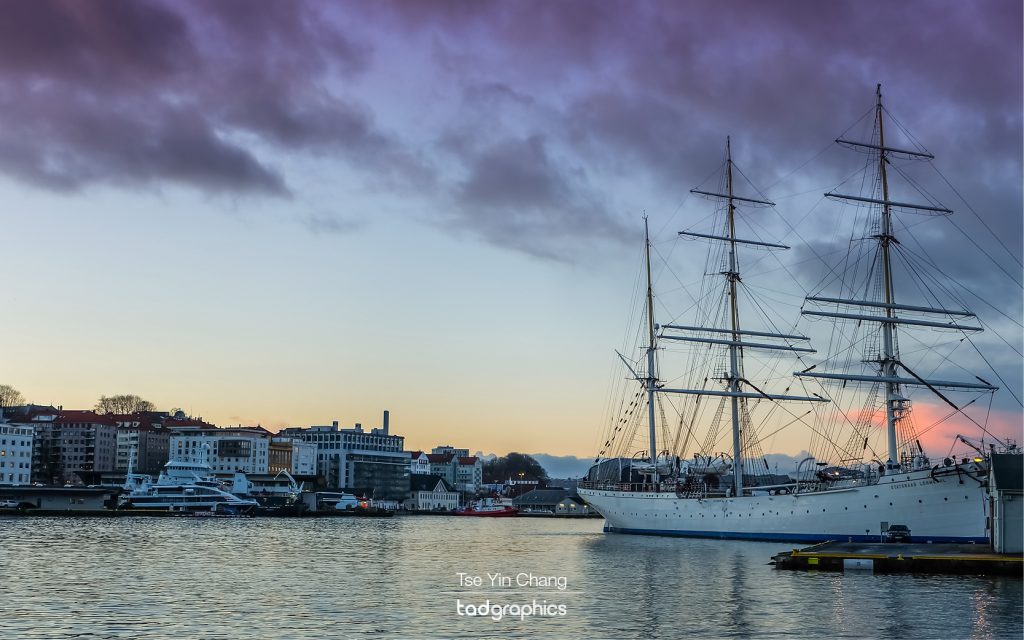
Our last stop was back in Bryggen. Bergen is far enough north to experience the northern lights. Normally you picture the phenomenon taking place over deserted snowy landscapes, so to see it over the old buildings of Bryggen sounded like an experience not to me missed. While we did see the lights, they were fairly faint and not as impressive as what we had seen in Lapland. It still made for a great night however, and it just highlighted how spectacular the northern lights had been the last time we saw them. It wouldn’t be right to complain as many people never get to experience them, and we had now done it trice!
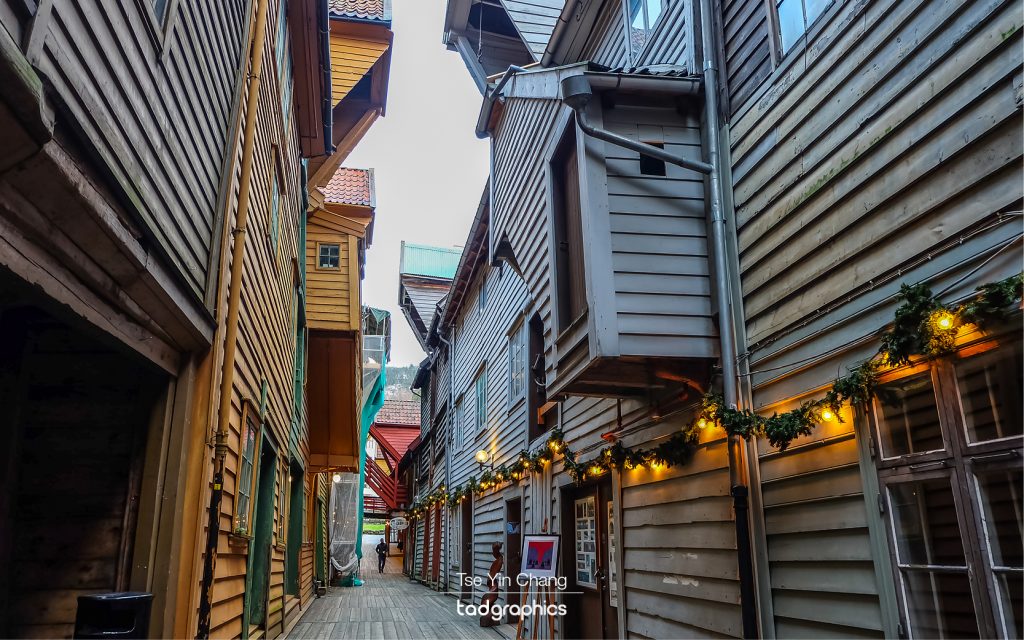
Come the next morning it was time to say bye bye to Bergen, and we headed to the train station for our return trip to Oslo. We would be retracing our steps along the Bergensbanen line, however this time without the diversions of our outward journey. The scenery along the way was no less enchanting this time around, and we rolled past snow covered mountain after mountain. Along the way we went through Finse, the highest station in Norway and accessible only by this train line. To get there we had to pass through a ten-kilometre tunnel, without which the villagers would be totally cut off. Eventually we arrived in Oslo, happily satisfied that we had seen some of the best that Norway had to offer.
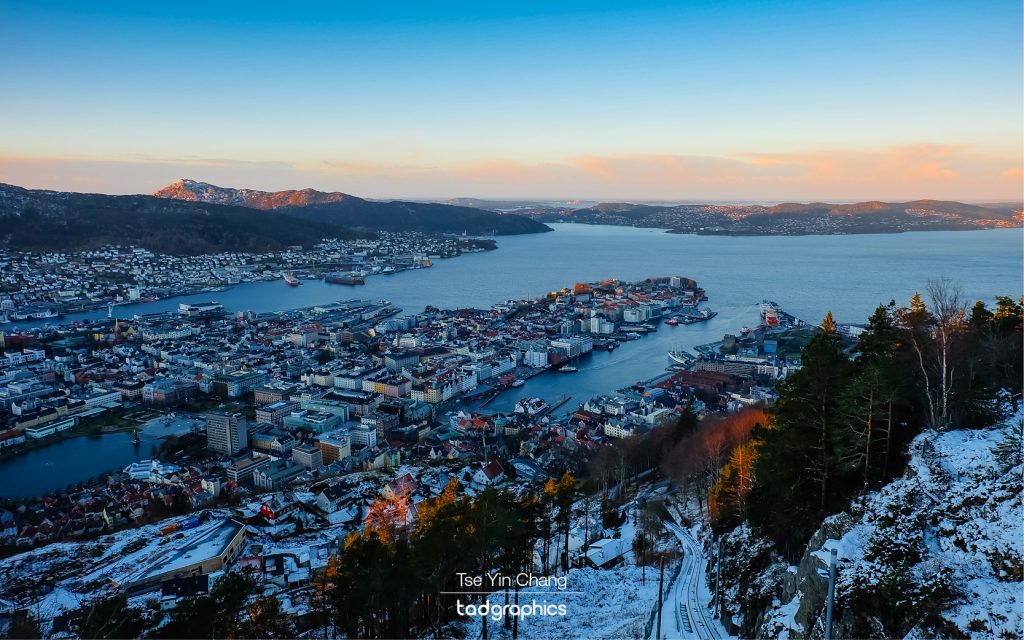
Prints from my Norway photo collection are available in a variety of different sizes and framing options. Please get in touch to find out more.
See also:
